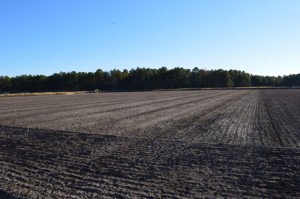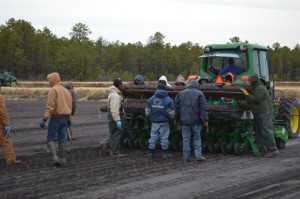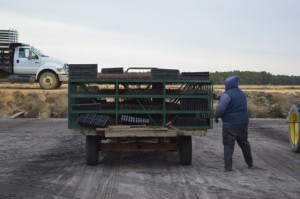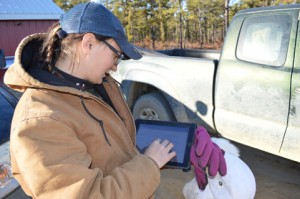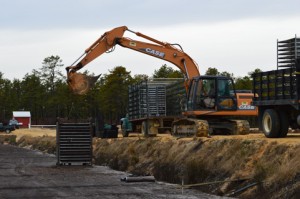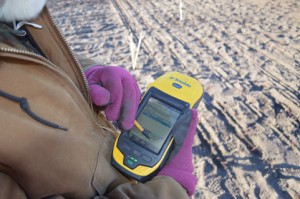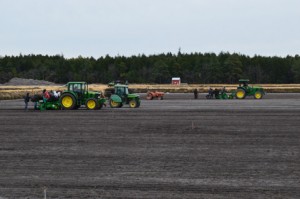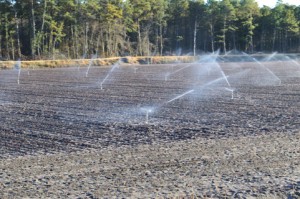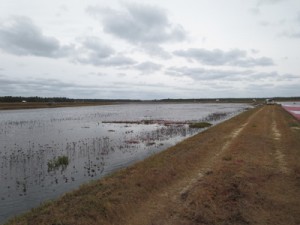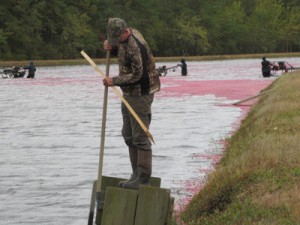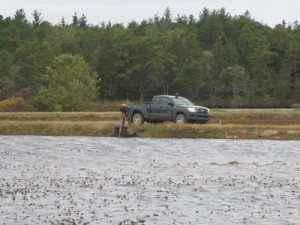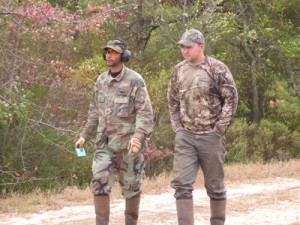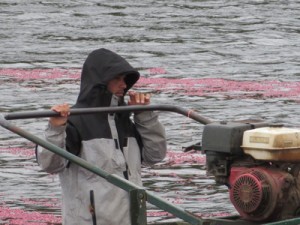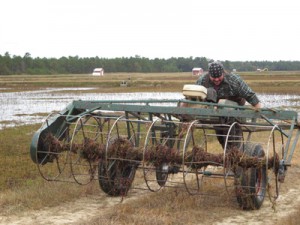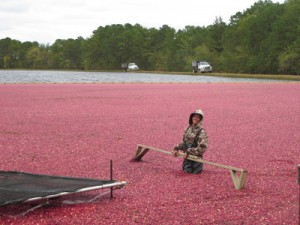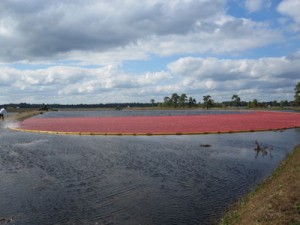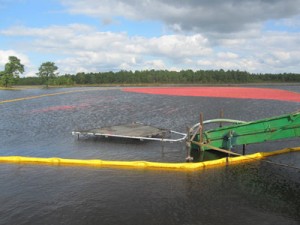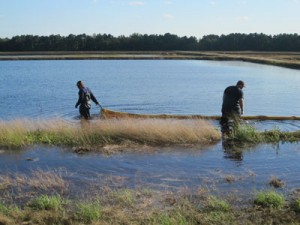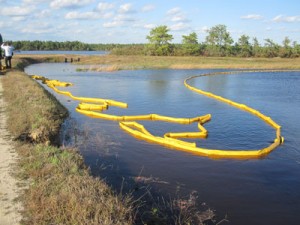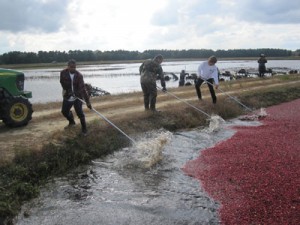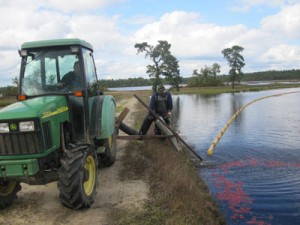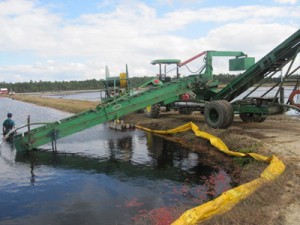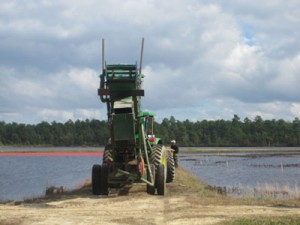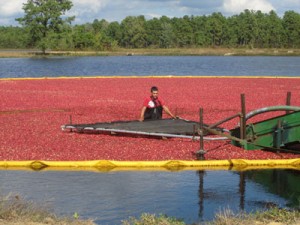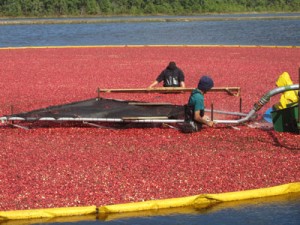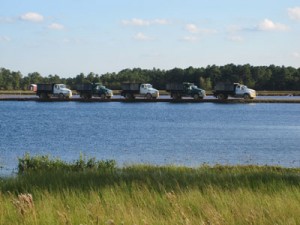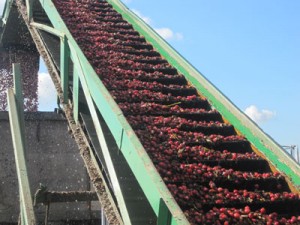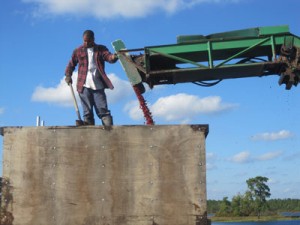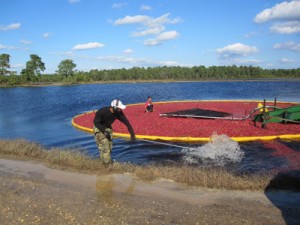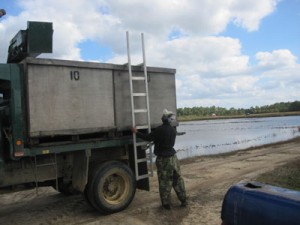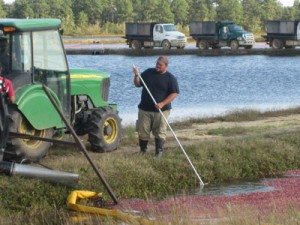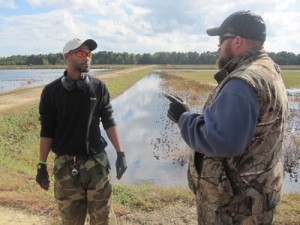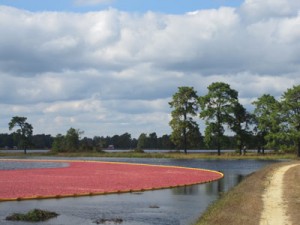Our fall planting at the Boricua bogs is almost done, which will complete the Oswego renovation. Our team started last Monday, and the weather has been mostly cooperative.
The planting team has been moving faster than ever before, and has even set a new record with over 3.5 acres planted in one day. Team member Casey Koehler attributes this to each team member knowing what their assigned task is in addition to good communication by New Production foreman Kelvin Colon. “We start at 6:30 in the morning and everyone just works,” she says. “Everybody has their job but if they’re needed elsewhere, they’ll step up, no questions asked. We switch off a lot, too; it can be hard on your back sitting on the planter. So people will exchange jobs so there are fresh hands and a fresh back on the planter.” In addition, Casey says, “The guys doing the hand planting are fast and they’re good. If everyone’s doing their jobs, then Kelvin can make sure everything’s getting done that needs to be done.”
Every team member is keeping busy. Casey was tracking the daily averages: daily acres planted, number of trays, and the number of plants per acre, as well as the running total acres, while Waldemar Blanco is in charge of making sure both planters are always fully loaded, the plants are delivered, and all trays are sorted and counted according to planter and/or hand planting in order to make accurate measurements.
Communication has become much more efficient with new technology, as updates in the field can be viewed on the office database. The team is also able to track the plant totals: how many carts ordered per day, how many trays used on both planters, how many carts are left at the end of the day, and how many cuttings are planted per acre. Our target is 60,000/acre. “We leave at least one for the following day,” Casey says. “Once we come in at 6:30, we’re moving. So the night before we’ll leave one ready to go, with a tarp over it to keep the heat in.”
Every day a team member measures the acreage to see if they’ve hit their targets, which started at 2.5 acres/day then changed to 3 acres/day. Some bogs are tougher than others, depending on layout: Boricua #5 has some unusual angles due to topography, which made more hand planting necessary and added to the overall time. But the team has been doing very well and are actually ahead of schedule, expecting to be finished by this afternoon.
All that remains to be done is watering the new acreage. While the mostly sunny and dry weather has been good for getting the planting finished, it does mean that the sprinklers need to be run every day for the new plants. It does serve a dual purpose: in addition to sealing the sil around the plants, the team can check for damaged sprinklers.
Thirty acres in ten days is a fantastic achievement, and our team should be proud of the work they have done. It is this willingness to do what needs to be done that helps Pine Island grow more acres and more fruit per acre, year after year.

